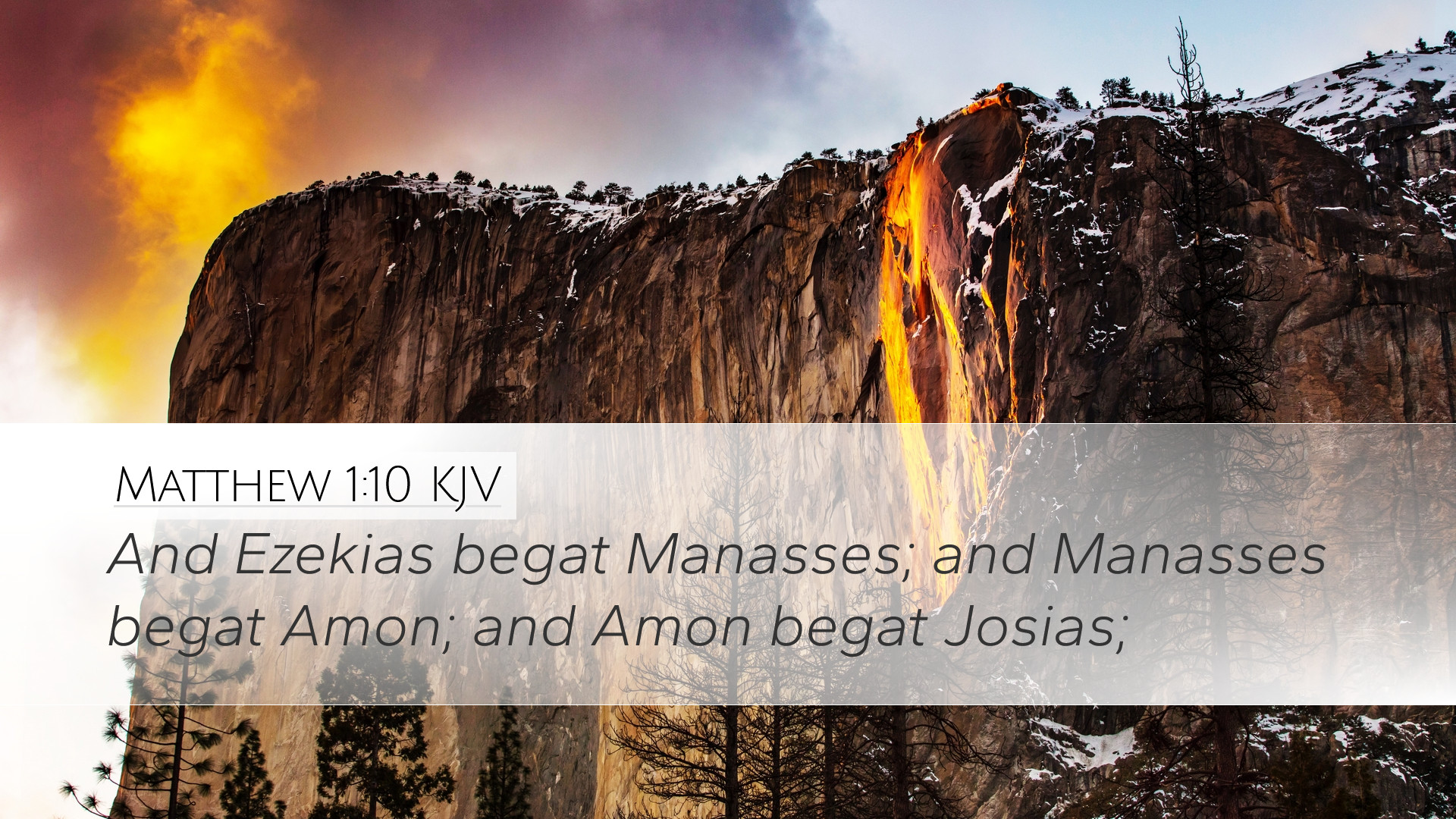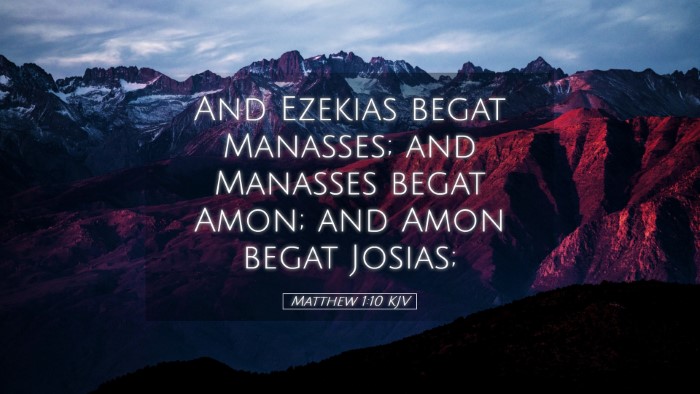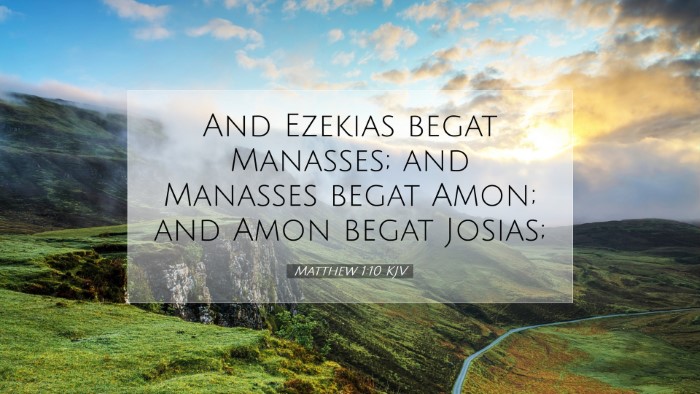Commentary on Matthew 1:10
Matthew 1:10 states: "And Hezron begot Ram, and Ram begot Amminadab." This verse is part of the genealogical account provided by Matthew, tracing the lineage of Jesus Christ. In this context, it is essential to delve into the significance of these names and the theological implications of this lineage.
Genealogical Context
This passage forms part of a larger genealogy that extends from Abraham to Jesus. The listing of names serves multiple purposes:
- Establishing Legitimacy: In Jewish culture, genealogy was fundamental in establishing a person's legal and social standing. By tracing Jesus' lineage, Matthew underscores His legitimacy as the Messiah.
- Connecting Old and New Covenants: This genealogy demonstrates that Jesus fulfills the promises made to the patriarchs, linking the Old Testament covenant with the New Testament revelation.
The Significance of Hezron
Hezron is commonly identified as a grandson of Judah, one of the twelve tribes of Israel. This lineage signifies:
- Tribal Heritage: Jesus is rooted within the tribe of Judah, which is prophetic, as it was foretold that the Messiah would arise from this tribe (Genesis 49:10).
- Divine Sovereignty: The mention of Hezron reminds readers that God's plan of salvation unfolds through ordinary people; God's purposes are carried out through the generations.
The Role of Ram
Ram, the son of Hezron, represents continuity in this line. Here are some insights regarding his inclusion:
- Symbol of Transition: Ram bridges the gap between the historical figures of the Israelites and the coming of the Christ.
- Ancestral Importance: Understanding the names in this lineage can highlight how God uses different individuals at different times to fulfill His promises.
Amminadab's Contribution
Following Ram, Amminadab is also part of this genealogy, and he is notable for a few reasons:
- Connection to Aaron: Amminadab is recorded in the lineage leading up to Aaron, the high priest, linking Jesus not only to royalty through Judah but also to priestly heritage.
- Covenantal Relationship: The presence of Amminadab in this genealogy emphasizes the continuity of God's covenant with Israel and its ultimate fulfillment in Christ.
Theological Implications
Overall, Matthew 1:10 is not merely a historical footnote; it provides theological foundations that are vital for understanding Jesus' identity:
- The Messiah’s Lineage: The genealogy reinforces the claims of Jesus' messiahship, showing His descent from David and Abraham.
- Inclusivity of the Gospel: By including various figures and their unique backgrounds, Matthew illustrates that the Gospel is for all, transcending ethnic and social boundaries.
Conclusion
In summary, Matthew 1:10 holds significance beyond its brevity as a genealogical record. It serves as a pivotal verse that connects the Old Testament with the New Testament and establishes Jesus Christ's rightful place in the history of salvation. Enhancing the understanding of this genealogy equips pastors, students, theologians, and Bible scholars with deeper insights into the consistency of God's redemptive plan.


